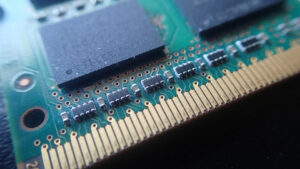Introduction
In our highly connected world, a stable Wi-Fi connection is essential. This article presents the top 5 strategies to solve Wi-Fi issues in 2023. It covers understanding common problems, advanced troubleshooting, and optimizing connectivity options. These strategies include enhancing signal strength, managing interference, upgrading equipment, and boosting security for seamless internet access and an improved digital experience. If you want to read my other blogs which can help you solve other tech related problems then go to my website Mafareviews.com. If you want to learn more about solving wi-fi problems I would recommend purchasing this book The WiFi Networking Book. The kindle version is this. The hardcover version is this. The paperback version is this.
Table of Contents
1. Understanding Common Wi-Fi Connection Issues
1.1 Identifying Wi-Fi connectivity problems
Ah, the frustration of having Wi-Fi connectivity problems. You’re happily scrolling through your favorite cat videos, and suddenly, your internet connection decides to take a coffee break. In this section, we’ll dive into the most common Wi-Fi connection issues, from dropped connections to slow speeds, helping you understand what’s going on when your Wi-Fi throws a tantrum.
1.2 Recognizing the impact of Wi-Fi signal strength
Have you ever wondered why your Wi-Fi signal seems weaker than your will to avoid doing chores? Well, signal strength plays a crucial role in the quality of your Wi-Fi connection. In this section, we’ll break down the importance of signal strength, how it affects your internet experience, and what you can do to give your Wi-Fi signal the boost it needs.
1.3 Identifying common sources of Wi-Fi interference
Just when you thought you had it all figured out, Wi-Fi interference sneaks in like an uninvited guest at a party. It disrupts your connection and ruins your Netflix binge-watching plans. Fear not! In this section, we’ll uncover the most notorious culprits behind Wi-Fi interference, so you can put an end to their shenanigans and enjoy uninterrupted internet bliss.
2. Assessing and Optimizing Your Wi-Fi Signal

2.1 Conducting a Wi-Fi signal strength assessment
Ready to play detective? Conducting a Wi-Fi signal strength assessment is the first step in solving your connection woes. In this section, we’ll show you how to get your Sherlock Holmes on and analyze your signal strength, allowing you to identify weak spots and take action to improve them.
2.2 Optimizing router placement for maximum coverage
Remember that joke about hiding the router under your pillow for better Wi-Fi? Well, turns out, router placement matters more than you think. In this section, we’ll guide you through the art of finding the perfect spot for your router, ensuring maximum coverage and minimizing dead zones in your home.
2.3 Utilizing Wi-Fi range extenders or mesh networks
Sometimes, a little boost is all your Wi-Fi signal needs to reach every nook and cranny of your humble abode. Enter Wi-Fi range extenders and mesh networks. We’ll explain how these magical devices work, how they can amplify your signal, and help you decide which one is the right fit for your Wi-Fi needs.
3. Upgrading Your Router and Network Equipment

3.1 Identifying when to upgrade your router
Is your router feeling like a dinosaur in the era of high-speed internet? It might be time for an upgrade. In this section, we’ll discuss the telltale signs that your router is overdue for retirement and guide you towards making a wise and speedy router upgrade decision.
3.2 Selecting the right router for your needs
Choosing a new router is like finding that perfect pair of shoes – they need to fit just right. But fear not, we’re here to help you navigate the sea of routers and find the one that meets your browsing, streaming, and gaming demands. Say goodbye to Wi-Fi hiccups and hello to seamless connection!
3.3 Upgrading network equipment for improved performance
While routers often steal the spotlight, upgrading your network equipment can also boost your Wi-Fi performance. In this section, we’ll explore other network components, such as modems and Ethernet cables, that may benefit from an upgrade, giving your Wi-Fi the power it needs to perform at its best.
4. Enhancing Wi-Fi Security and Managing Interference
4.1 Strengthening Wi-Fi network security measures
With hackers lurking around every digital corner, securing your Wi-Fi network is crucial. In this section, we’ll show you how to lock down your Wi-Fi with strong passwords, encryption methods, and other security measures, ensuring that only authorized users have access to your precious internet.
4.2 Managing and troubleshooting Wi-Fi interference issues
Wi-Fi interference can feel like playing a never-ending game of whack-a-mole. But worry not, we’ve got some tricks up our sleeves to help you pinpoint and tackle interference problems head-on. In this section, we’ll equip you with the tools and knowledge to keep interference at bay and your Wi-Fi signal strong and steady.
4.3 Avoiding common Wi-Fi security pitfalls
When it comes to Wi-Fi security, even the smartest among us can fall into traps now and then. But fear not, Sherlock, we’re here to expose the common Wi-Fi security pitfalls and help you avoid them. In this section, we’ll arm you with the knowledge to keep your Wi-Fi secure and your online presence safe from prying eyes.
Now that you’re armed with these effective strategies, saying goodbye to Wi-Fi connection problems is within your reach. So go forth, my internet-savvy friend, and conquer the world of Wi-Fi with confidence and impeccable reliability!
5. Leveraging Advanced Troubleshooting Techniques
5.1 Resetting and troubleshooting the router
Ah, the good old router reset. It’s like turning your Wi-Fi off and on again, but with a bit more finesse. When your Wi-Fi connection is giving you grief, try giving your router a reset. It’s like hitting the reset button on life, but specifically for your Wi-Fi. Just unplug it, give it a few seconds to gather its thoughts, and plug it back in. Hopefully, it’ll come back with a fresh perspective and a better Wi-Fi signal.
5.2 Updating firmware and drivers
Firmware and drivers might sound like boring tech jargon, but updating them can actually do wonders for your Wi-Fi connection. Think of firmware updates as little boosts of energy for your router, giving it the strength to conquer Wi-Fi connectivity issues. And drivers? Well, they’re like the pit crew for your devices, making sure they’re running smoothly and getting the most out of your Wi-Fi. So, whenever you see that little update notification, don’t ignore it. Embrace it, and let your Wi-Fi thrive.
5.3 Utilizing network diagnostic tools and apps
When it comes to solving Wi-Fi problems, sometimes we need a little extra help. That’s where network diagnostic tools and apps swoop in to save the day. These nifty tools can scan your Wi-Fi network, identify any issues, and even suggest solutions. It’s like having a personal Wi-Fi therapist in your pocket. So, if you’re feeling lost in the world of Wi-Fi, don’t hesitate to reach out to these trusty helpers. They’ll diagnose, prescribe, and have you back surfing the web in no time.
6. Exploring Alternative Connectivity Options
6.1 Using Ethernet connections for stable connectivity
Ah, good old Ethernet cables. They may not be as fancy as Wi-Fi, but they sure are reliable. When your Wi-Fi is acting up and you need a stable connection, just plug in an Ethernet cable and be amazed by the wonders of wired connectivity. It’s like stepping back in time to a simpler era when things just worked. So, if you’re tired of the Wi-Fi rollercoaster, grab an Ethernet cable and enjoy the smooth ride.
6.2 Exploring powerline adapters as a Wi-Fi alternative
Powerline adapters, the unsung heroes of Wi-Fi connectivity. With these little devices, you can transform the electrical wiring in your home into a high-speed internet highway. No more battling with Wi-Fi dead zones or weak signals. Just plug one adapter into your router, another into an outlet near your desired destination, and voila! You have a reliable internet connection without the Wi-Fi drama. It’s like magic, but without the wand-waving and funny hats.
6.3 Considering mobile hotspot solutions
When all else fails and you need Wi-Fi on the go, it’s time to unleash the power of the mobile hotspot. With just a few taps on your smartphone, you can become a walking Wi-Fi signal, providing internet access to all those in need. It’s like being a superhero, but instead of fighting crime, you’re fighting Wi-Fi connection problems. So, next time you find yourself in a Wi-Fi desert, whip out your phone and save the day with your trusty hotspot.
7. Future-proofing Your Wi-Fi Network
7.1 Embracing Wi-Fi 6 and future wireless technologies
Wi-Fi 6, the superhero of wireless technologies. With faster speeds, greater capacity, and improved performance, Wi-Fi 6 is the future we’ve all been waiting for. So, when it comes time to upgrade your Wi-Fi gear, don’t settle for anything less than Wi-Fi 6. Embrace the future, my friends, and let your devices bask in the glory of seamless connectivity. It’s like giving your Wi-Fi a VIP pass to the hottest party in town.
7.2 Implementing smart home network management
In a world where our homes are getting smarter, our Wi-Fi networks must keep up. Smart home network management systems can help optimize your Wi-Fi performance, ensuring that every device in your home gets the attention it deserves. It’s like having a butler for your Wi-Fi, making sure everything runs smoothly and efficiently. So, if you’re living in a smart home, don’t forget to give your Wi-Fi the intelligence it needs to keep up with the times.
7.3 Staying updated on emerging Wi-Fi advancements
This passage emphasizes the importance of staying updated with evolving Wi-Fi technology, suggesting attending conferences, reading industry news, and following experts on social media as ways to stay informed. The text concludes by highlighting the benefits of implementing the strategies outlined in the article, which include optimizing Wi-Fi signals, upgrading network equipment, enhancing security, and exploring alternative connectivity options. The overall goal is to ensure a reliable and seamless internet experience while future-proofing your Wi-Fi network.
FAQ

1. How can I determine if my Wi-Fi signal strength is the root cause of my connection problems?
One way to assess your Wi-Fi signal strength is by using a Wi-Fi analyzer app or software on your device. These tools can provide detailed information about the signal strength and channel interference in your area. Additionally, you can try moving closer to your router or accessing the internet from different areas of your home to see if the signal improves. If you notice a significant improvement in connection quality when closer to the router, it is likely that signal strength is a contributing factor to your connection problems.
2. Are there any security measures I can take to protect my Wi-Fi network?
Absolutely! To enhance the security of your Wi-Fi network, consider implementing the following measures:
- Change the default password of your router to a strong and unique one.
- Enable network encryption such as WPA2 or WPA3.
- Disable remote management access to your router.
- Regularly update the firmware of your router to ensure any security vulnerabilities are patched.
3. Is it worth upgrading my router if I’m experiencing Wi-Fi connection problems?
If you are facing persistent Wi-Fi connection issues, it may be worth considering upgrading your router. Newer routers often offer improved signal strength, faster speeds, and better overall performance. Look for routers that support the latest wireless standards, such as Wi-Fi 6, and have multiple antennas for better coverage. However, before making a purchase, ensure that other factors, such as signal interference, network congestion, or outdated network equipment, have been properly addressed.
4. How can I identify the primary causes of my slow Wi-Fi connection?
Identifying the root causes of a slow Wi-Fi connection involves a few steps. First, check your internet service plan to ensure it meets your needs. Then, assess your Wi-Fi signal strength using an analyzer app or by moving closer to your router. Additionally, verify that there are no bandwidth-hungry devices or background downloads causing the slowdown. Finally, ensure your router is updated and configured correctly, and consider upgrading your equipment if it’s outdated.
5. What steps can I take to improve the security of my Wi-Fi network?
Boosting your Wi-Fi network security is crucial. Begin by changing your router’s default password to a strong, unique one. Activate network encryption, like WPA2 or WPA3, to protect your data. Disable remote router management to prevent unauthorized access. Lastly, regularly update your router’s firmware to patch security vulnerabilities.
6. How can I ensure a stable Wi-Fi connection in a crowded area with many networks?
In crowded Wi-Fi environments, interference from neighboring networks can be a challenge. To maintain a stable connection, select the least congested Wi-Fi channel on your router. You can use a Wi-Fi analyzer app to identify the best channel. Additionally, consider using a dual-band router to operate on both 2.4 GHz and 5 GHz frequencies, as 5 GHz is less congested. Finally, keep your router’s firmware updated and use security protocols like WPA3 to protect your network from unwanted access.
7. Can using a VPN affect my Wi-Fi connection speed?
Yes, using a VPN (Virtual Private Network) can impact your Wi-Fi connection speed. VPNs route your internet traffic through their servers, which can lead to a reduction in speed. The extent of the speed decrease depends on factors like the VPN provider, server location, and your original internet speed. While VPNs provide enhanced security and privacy, they may not be suitable for bandwidth-intensive activities like online gaming or streaming 4K content.
8. What should I do if my Wi-Fi network suddenly drops, and how can I prevent it?
If your Wi-Fi network experiences sudden drops, there are several steps to take. Start by checking if the issue is specific to one device or affecting all devices connected to your network. If it’s a single-device problem, try restarting the device or forgetting and reconnecting to the Wi-Fi network. If all devices are affected, reboot your router by unplugging it, waiting a few seconds, and plugging it back in.
To prevent future drops, ensure your router is placed in an optimal location with minimal interference, update its firmware regularly, and use a strong, unique password to secure your network. Additionally, monitor for potential issues such as outdated equipment or nearby electronic devices causing interference.




